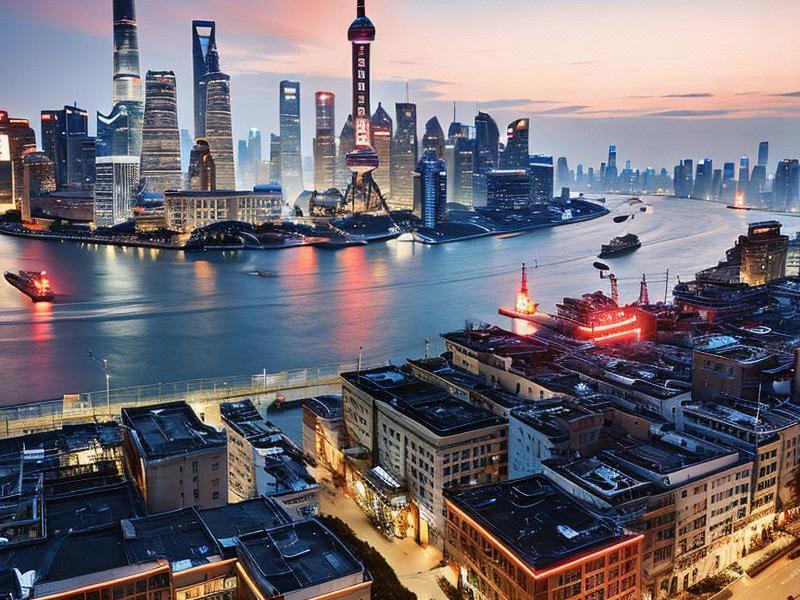This article delves into the multifaceted story of Shanghai, a city that has transformed from a modest port town into a global metropolis. It explores the city's urban development, cultural heritage, economic growth, and its increasing global influence.

Shanghai, often referred to as the "Pearl of the Orient," is a city that embodies the spirit of modernity and tradition. Situated on the eastern coast of China, it stands as a testament to the country's rapid economic development and urbanization. Over the past century, Shanghai has undergone a remarkable transformation, evolving from a small fishing village into one of the world's most dynamic cities.
The journey of Shanghai is deeply intertwined with the history of China itself. In the 19th century, the city became a major trading port under the unequal treaties imposed by Western powers. This period saw the influx of foreign influences, which left an indelible mark on the city's architecture, culture, and lifestyle. The Bund, with its colonial-era buildings, stands as a living museum of this era, offering a glimpse into the city's cosmopolitan past.
However, Shanghai's story is not just one of foreign domination but also of resilience and reinvention. After the founding of the People's Republic of China in 1949, the city underwent significant changes. The socialist policies of the Maoist era reshaped Shanghai's economy and society, focusing on industrialization and collectivization. Despite these changes, the city retained its entrepreneurial spirit and adaptability.
The economic reforms initiated in the late 1970s marked a new chapter for Shanghai. The opening up of China to the world brought unprecedented opportunities for the city. Shanghai quickly emerged as a hub for finance, trade, and technology. The establishment of the Pudong New Area in the 1990s was a turning point, symbolizing the city's ambition to become a global financial center. Today, Pudong is home to some of the tallest skyscrapers in the world, including the iconic Oriental Pearl Tower and the Shanghai Tower.
爱上海论坛
Urban development in Shanghai is characterized by its innovative approach to balancing modernization with the preservation of cultural heritage. The city has made significant efforts to protect its historical sites while embracing the future. The Old City, with its narrow streets and traditional Shikumen houses, offers a contrast to the futuristic skyline of Pudong. Efforts to restore and maintain these historic areas have ensured that Shanghai's past coexists harmoniously with its present.
Culturally, Shanghai is a melting pot of influences. The city's vibrant art scene, bustling night markets, and diverse culinary offerings reflect its cosmopolitan nature. The Shanghai International Film Festival, one of the oldest film festivals in Asia, attracts filmmakers and audiences from around the world. The city's museums, such as the Shanghai Museum, showcase a rich collection of Chinese art and artifacts, highlighting the city's role as a cultural hub.
Economically, Shanghai is a powerhouse. It is the largest city in China by population and the second-largest city by GDP after Beijing. The city's strategic location along the Yangtze River and its deep-water port make it a key player in global trade. Shanghai is home to the Shanghai Stock Exchange, one of the largest stock exchanges in the world, and is a major center for finance, insurance, and real estate.
上海夜网论坛
The city's global influence extends beyond economics. Shanghai has become a symbol of China's rise on the world stage. It hosts numerous international events, including the World Expo in 2010, which attracted millions of visitors and showcased China's achievements and aspirations. The city's international schools, multinational corporations, and global partnerships further underscore its role as a bridge between China and the world.
However, Shanghai's rapid growth has not been without challenges. The city faces issues such as traffic congestion, environmental pollution, and housing shortages. The government has implemented various measures to address these concerns, including the expansion of public transportation, the promotion of green technologies, and the development of affordable housing projects.
The story of Shanghai is also one of people. The city's residents, known for their entrepreneurial spirit and adaptability, have played a crucial role in its transformation. From the workers in the bustling factories to the professionals in the skyscrapers, the people of Shanghai embody the city's dynamic energy and resilience.
爱上海419论坛
Shanghai's future looks promising as it continues to evolve and innovate. The city is investing in cutting-edge technologies such as artificial intelligence, big data, and renewable energy to maintain its competitive edge. The Belt and Road Initiative, a global development strategy proposed by China, positions Shanghai as a key node in connecting Asia, Europe, and Africa.
In conclusion, Shanghai's journey from a modest port town to a global metropolis is a story of resilience, reinvention, and ambition. The city's urban development, cultural heritage, economic growth, and global influence make it a fascinating case study of modern China. As Shanghai continues to write its chronicles, it remains a beacon of hope and opportunity, inspiring dreams and shaping the future.